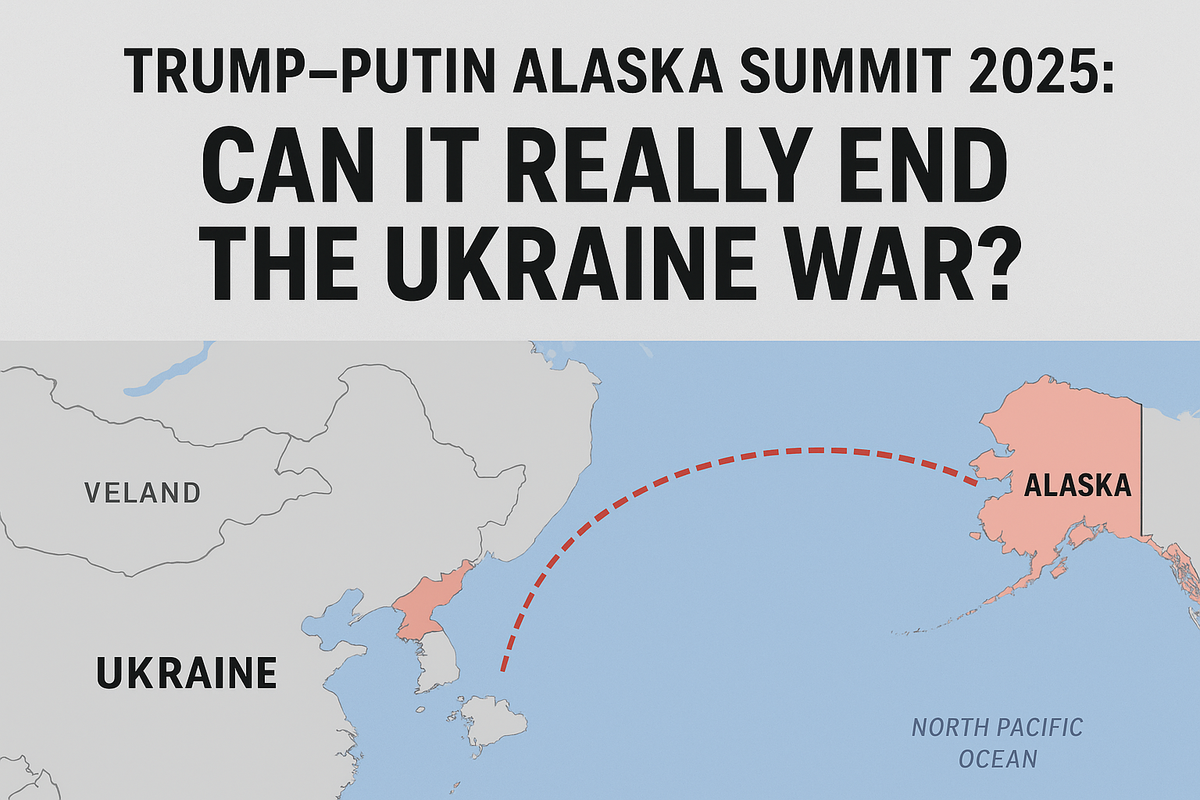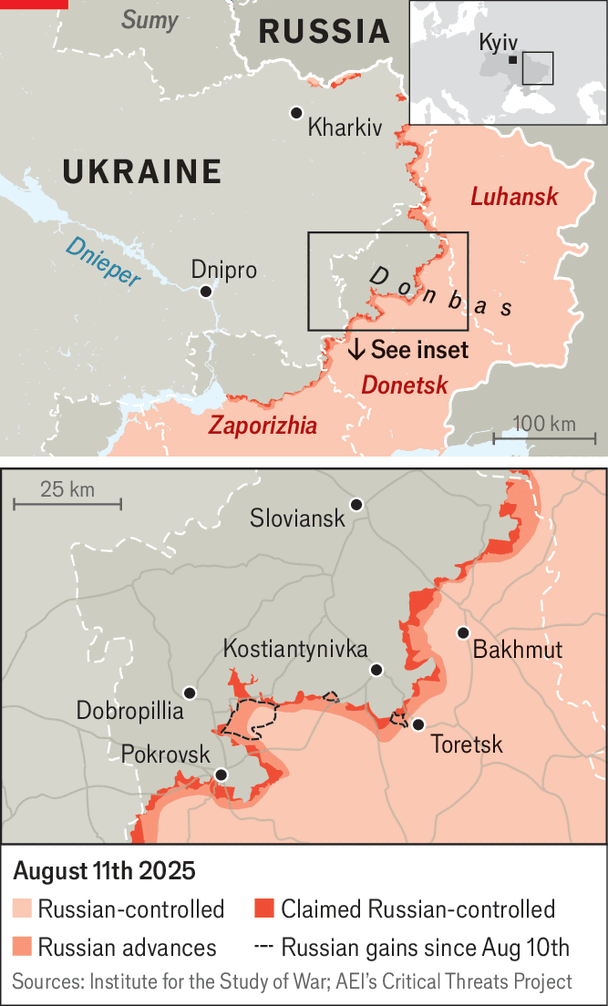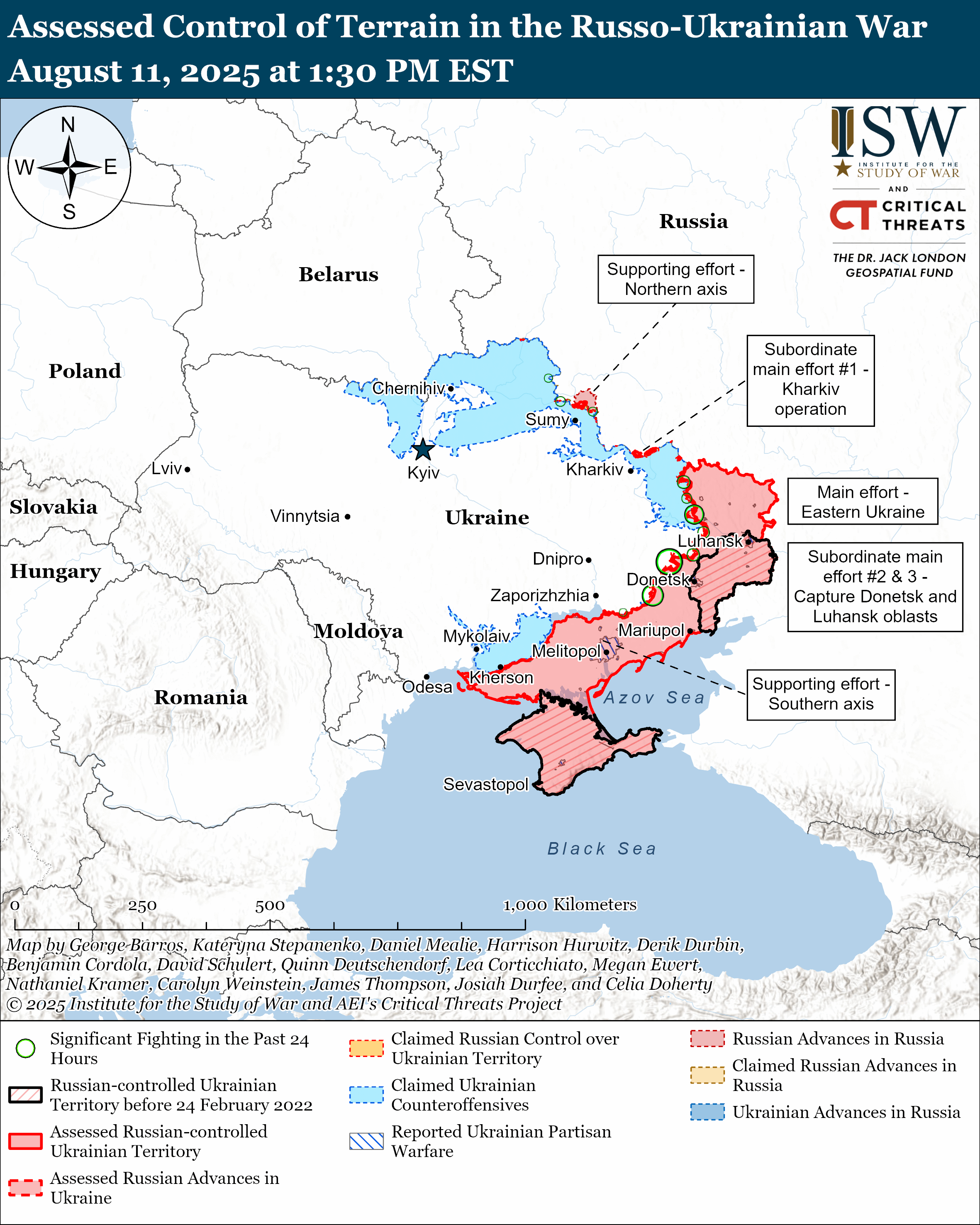Trump-Putin Alaska Summit 2025: A Last-Gasp Peace Effort or a Geopolitical Gambit?
The highly anticipated Trump-Putin summit in Alaska is underway. Can this high-stakes meeting truly end the Ukraine War? Explore the key negotiation points, Ukraine's critical but precarious role, and the future of sanctions, trade, and global stability in this deep-dive investigative report.

Written by Lavanya, Intern, Allegedly The News
ANCHORAGE, ALASKA, August 15, 2025
The world holds its breath as U.S. President Donald Trump and Russian President Vladimir Putin meet in a historic summit on the frigid, symbolic soil of Alaska. This is not merely a bilateral meeting; it is a desperate, high-stakes gamble to end a war that has raged in the heart of Europe for more than three years, claiming countless lives and upending the global order. Announced with little warning and immense fanfare, this summit at Joint Base Elmendorf-Richardson is the most direct attempt yet to fulfill President Trump's campaign promise to end the conflict “within 24 hours.” With a deeply divided West and a shifting military balance on the battlefield, the moment is one of profound urgency.
The current political and military climate has made this meeting both urgent and fraught with peril. Russia, despite facing crippling international sanctions, has made slow but steady gains in key regions of eastern Ukraine, particularly in Donetsk and Luhansk. Meanwhile, Ukraine's military, once buoyed by a unified Western front, is now grappling with the fatigue of a prolonged conflict and the specter of reduced U.S. aid. The timing of this summit, just weeks into a new U.S. presidential term, positions Washington as the central broker of a deal, a development that has left many European allies feeling anxious and sidelined. The specter of a peace forged in a one-on-one negotiation between two powerful leaders, without Kyiv's direct involvement, looms large over the talks.
A Stage of History: The Symbolic and Strategic Choice of Alaska
The selection of Alaska as the summit’s venue is not a matter of simple geography. While its location, roughly halfway between Washington D.C. and Moscow, is logistically convenient, the state's history provides a powerful symbolic backdrop for the negotiations. Alaska was purchased from Russia by the United States in 1867 for a mere $7.2 million, a transaction initially derided as "Seward's Folly." The deal, however, marked a key moment of imperial transition and set the stage for a new relationship between the two nations.
During the Cold War, Alaska became a frontline state, a military bulwark against the Soviet Union, with radar installations and airbases built to monitor and intercept Russian aircraft. Meeting at Joint Base Elmendorf-Richardson, a hub of Cold War deterrence, is a subtle but potent gesture. It acknowledges a history of both intense rivalry and grudging cooperation. As Kremlin aide Yuri Ushakov noted, the region is where "our countries' economic interests intersect," alluding to the potential for future collaboration on energy and trade. This location is designed to frame the talks not just as a one-off attempt to end the war, but as a meeting to redefine bilateral relations after years of hostility, a message that serves both leaders' narratives.

The Pre-Summit Dance: A Timeline of Escalation and Diplomacy
- February 2022: Russia launches its full-scale invasion of Ukraine, sparking the largest conflict in Europe since World War II.
- 2023-2024: Multiple rounds of direct talks fail. Battlefield dynamics shift, and a political deadlock ensues.
- Early 2025: President Trump is re-elected, promising to end the war. His administration begins to signal a more direct approach to talks with Moscow.
- July 2025: Following a lack of progress, Trump announces a series of escalating tariffs on countries that continue to trade with Russia, including India, which is hit with a 25% reciprocal tariff on its exports.
- August 6, 2025: A special U.S. envoy meets with Putin in Moscow, reportedly to lay the groundwork for a bilateral meeting. The envoy proposes a trilateral summit with Ukrainian President Zelenskyy, but the Kremlin reportedly dismisses the idea.
- August 8, 2025: President Trump announces the Alaska summit on Truth Social, calling it a "highly anticipated meeting." The news sparks immediate alarm in Kyiv and among European allies.
- August 13, 2025: In a virtual meeting, Trump reassures European leaders and President Zelenskyy that he will not make a deal "behind their backs." Zelenskyy, in a separate statement, reiterates his firm stance against ceding any territory and warns of a "third war" if Russia is rewarded for its aggression.
- August 15, 2025: The summit begins in Anchorage, with the world watching to see if a genuine peace is possible.
The Main Event: Key Negotiation Points on the Table
The crux of the Alaska summit is the negotiation of a peace deal, and sources suggest the talks will center on a handful of deeply contentious issues:
- Territorial Demarcation and Sovereignty: This is the most difficult and emotional issue. Russia will almost certainly demand international recognition of its annexed territories, including Crimea and the four eastern regions of Donetsk, Luhansk, Kherson, and Zaporizhzhia. President Trump has himself spoken of "land swaps," a concept that has sent shivers down the spines of Ukrainian officials. A possible compromise might involve a ceasefire along the current lines of contact, essentially freezing the conflict in place. While this would end the active fighting, it would legitimize Russia's occupation of nearly one-fifth of Ukraine's territory, a scenario Kyiv has repeatedly rejected as a "dead decision."
- Sanctions Relief: For Russia, a primary objective is the lifting of the severe sanctions imposed by the U.S., EU, and other nations. These sanctions have targeted Russia's financial sector, energy exports, and key individuals, and their removal would be a major economic and political victory for the Kremlin. The U.S. and its allies, however, see sanctions as their most powerful tool of leverage. A deal would likely tie the gradual removal of sanctions to Russia's compliance with the terms of a ceasefire and eventual peace treaty, a point that will be heavily debated.
- Ukraine's Neutrality and Security Guarantees: Russia's initial invasion was driven, in part, by its demand for a neutral Ukraine that would never join NATO. While Ukraine's formal pursuit of NATO membership has been complicated by the war, the issue remains a core point of disagreement. A potential compromise could see Ukraine formally abandon its NATO aspirations in exchange for a robust, multilateral security guarantee from a coalition of countries, similar to a mutual defense pact. This would be a difficult concession for Kyiv, as it would effectively give up its right to choose its own security alignment in exchange for a promise from a Western alliance that has struggled to provide the military support it needs.
The Silent Partner: Ukraine's Role, or the Lack Thereof
The most glaring and alarming feature of the Alaska summit is the exclusion of President Volodymyr Zelenskyy. The White House has framed the meeting as a "listening exercise" to better understand Russia's position, but this narrative is cold comfort to Kyiv. Zelenskyy has repeatedly stated that any agreement made without Ukraine's direct participation will not be recognized. "These are dead decisions," he warned, "they will never work."
This exclusion is seen by many analysts as a victory for Putin, who has long sought to sideline Ukraine and negotiate directly with the West. The move undermines Ukraine's sovereignty and places its future in the hands of two leaders, one of whom has shown a willingness to entertain Russian territorial demands. This has placed immense pressure on Zelenskyy to manage the fallout, reassure his people and allies, and maintain a unified front while being relegated to the role of a concerned observer.

The Global Ripples: Impact on Sanctions, Trade, and Energy Markets
The consequences of the Alaska summit will reverberate far beyond Ukraine's borders, impacting global trade, energy markets, and the future of international relations.
- Sanctions and Trade: A successful peace deal could lead to a phased removal of sanctions, potentially revitalizing Russia's economy and its trade relationships. This would directly impact countries like India, which have been struggling with U.S. tariffs imposed for their continued trade with Russia. The prospect of an end to these sanctions would be a significant economic incentive for many nations to support a deal. However, an abrupt or unilateral lifting of sanctions by the U.S. could fracture the Western alliance, particularly with European nations that have borne the brunt of the economic fallout.
- Energy Markets: A resolution to the conflict would stabilize energy markets, which have been volatile since the invasion. The reopening of natural gas pipelines and the normalization of Russian oil exports would likely lower global energy prices, providing a much-needed boost to economies worldwide. This is a key reason many nations are eager for a swift resolution.
- Geopolitical Alignment: The summit has the potential to redefine the U.S.-Russia relationship. After years of hostility and diplomatic isolation, a successful meeting could usher in a new era of engagement. This would be a major geopolitical shift, as it could signal a U.S. pivot away from its long-standing focus on its European allies and toward a more transactional, bilateral relationship with Moscow. This could have profound implications for NATO, the G7, and the entire architecture of Western security.
An Unstable Peace: Three Possible Outcomes
As the talks unfold, three scenarios seem most plausible, each with its own set of risks and rewards:
- Best-Case Scenario: The Comprehensive Peace Plan. Trump and Putin announce a framework for a genuine peace. This would include an immediate, unconditional ceasefire, a phased withdrawal of Russian troops from most of Ukraine's territory, and the establishment of a new, internationally-backed security framework for Ukraine. Sanctions would be lifted incrementally, and both sides would commit to direct, Kyiv-led negotiations on the final status of disputed territories. This outcome, though highly unlikely given the deep-seated disagreements, would be a monumental diplomatic achievement and a major step toward global stability.
- Worst-Case Scenario: The Fiasco. The talks fail completely. Putin remains unwilling to concede on key demands, and Trump, frustrated by the lack of progress, follows through on threats of harsher sanctions and reduced aid to Ukraine. This failure would embolden Russia, leaving Ukraine more vulnerable and the Western alliance more fractured. It could lead to a new, more aggressive Russian offensive, plunging the region into even greater uncertainty and escalating the conflict.
- Most-Likely Scenario: The ‘Agreement to Agree.’ The summit ends with a vague but optimistic joint statement. Trump and Putin declare a "good and productive" meeting, announcing that they have established a "path forward" for future negotiations. They may agree to a temporary, partial ceasefire in certain areas, but the most difficult issues - territorial concessions, sanctions, and Ukraine's role - are punted to future talks. This outcome allows both leaders to claim a diplomatic victory while delaying a real resolution, creating a fragile and unstable peace that could collapse at any moment.
The Next Chapter: An Unanswered Question
The outcome of the Trump-Putin summit is not just a matter of international diplomacy; it is a question of war and peace, sovereignty and self-determination. The talks have raised profound questions about the nature of modern conflict and the role of powerful states in shaping the fates of smaller ones. As the discussions continue behind closed doors, the world waits to see whether this "last-gasp" effort will bring an end to the fighting or simply create a pause before the next, more dangerous phase.
What Does a “Good” Peace Look Like?
Is a peace deal that trades Ukrainian land for a cessation of hostilities a moral victory or a capitulation? Should the global community accept a resolution that rewards military conquest?
Sources
Council on Foreign Relations, The Times of India, Al Jazeera, Institute for the Study of War (ISW) & AEI’s Critical Threats Project, The Kyiv Independent, The Associated Press, Atlantic Council.




